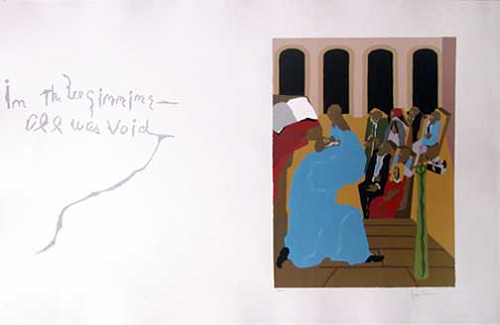
Lawrence, no. 1: ("In the Beginning--All was Void") Image From: Bill Hdoges Gallery
Replete with bright flashes of color, the "Genesis" series of Jacob Lawrence (1917-2000), currently on display on the back wall of the Harry Ransom Center's King James Bible exhibition, pulled me in like a tractor beam from across the room. It is perhaps only appropriate, then, that the subject of this series is an enthralling spectacle of storytelling and creation.Though Lawrence is perhaps best known for his "Migration Series," a sixty-panel retelling of the African-Americans' migration across the United States, Lawrence's comparatively short (8 panel) portrayal of the narration of Genesis deserves attention for its ability to express a powerful sense of motion in a single place.
Recent comments
2 years 29 weeks ago
2 years 44 weeks ago
2 years 44 weeks ago
2 years 50 weeks ago
3 years 4 weeks ago
3 years 4 weeks ago
3 years 4 weeks ago
3 years 6 weeks ago
3 years 6 weeks ago
3 years 6 weeks ago